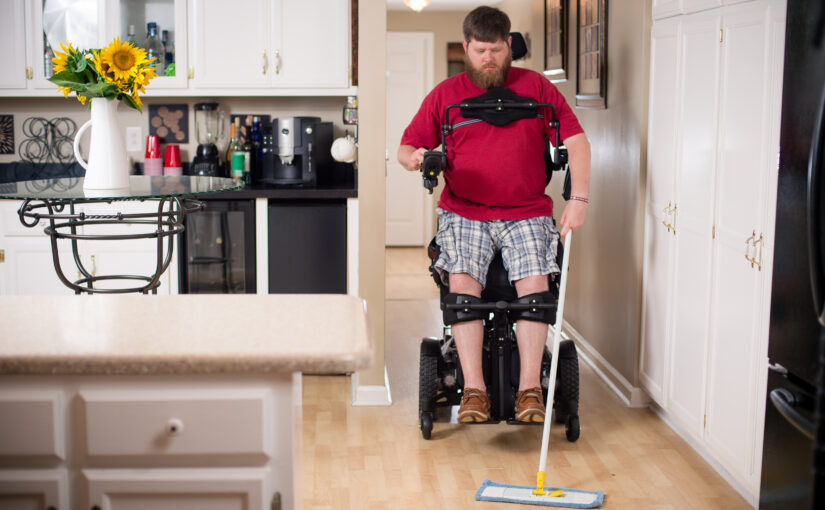Losing the ability to stand is one of the hardest adjustments a severely injured worker ever makes.
Humans are designed to stand and take the pressure of our weight on our feet. If sitting is the new smoking and bad for sedentary workers, imagine how bad it is for someone confined to a wheelchair. Sitting for 12-14 hours a day causes hamstrings to tighten and muscles to contract. And limited activity can lead to weight gain and obesity.
Standing is good for bone density, circulation, digestion, bladder, and bowels among other things. It’s one of the best pressure release techniques for preventing pressure injuries (wounds).
Standing brings psychological benefits as well. With a standing wheelchair, an injured woman can literally look someone in the eye and more easily interact with friends, family, and colleagues. And, whether it’s standing at a bar or a urinal, standing makes a man feel more like a man.
In addition, many patients can perform more activities of daily living when they can stand. Confidence, independence, and functionality are some benefits.
Cost tends to be the barrier to standing wheelchairs. Understandably, payers flinch at a $65,000+ price tag for a standing chair, but these chairs can avoid other significant costs:
- Home modifications. There’s no need to renovate the kitchen if the worker can reach the cabinets.
- Pressure injury treatment. (A hospital visit can run $100,000 or more.)
- Medical treatment for complications, like urinary tract infections, osteoporosis, and digestive disorders.
- Home health care workers.
Standing chairs facilitate return to work & productivity
ATF Medical worked with a police officer who was badly shot and confined to a wheelchair. He eventually returned to work in a desk job. Since he couldn’t reach some of the files, the police department hired someone to help him. After going through a standing program (see Essentials for a Successful Standing Program) and receiving a standing wheelchair, he could handle all his duties without an assistant. The department reassigned the helper, and the officer regained pride in his ability fully contribute to fighting crime.
Workers’ comp care should restore a worker to their pre-injury condition as much as possible. Not only do standing programs help do that, but they also provide major health benefits. It’s an investment, but it’s an investment in the workers’ overall physical and mental wellbeing and can contain other claim costs.
It’s worth examining claims for workers who could qualify for a standing program. I’m happy to answer questions about the equipment and our OTs and ATPs can evaluate patients, guide them to the most appropriate standing program, and help find the right equipment for them. Contact Rick Wyche, rwyche@atfmedical.com, 202-850-0561.
Photo credit: Courtesy of Permobil

